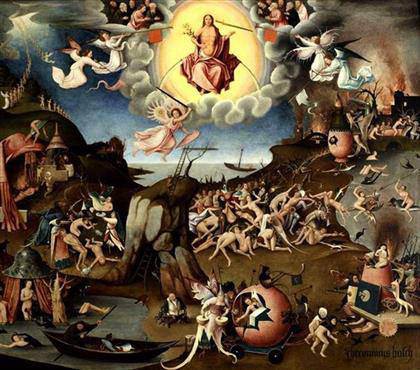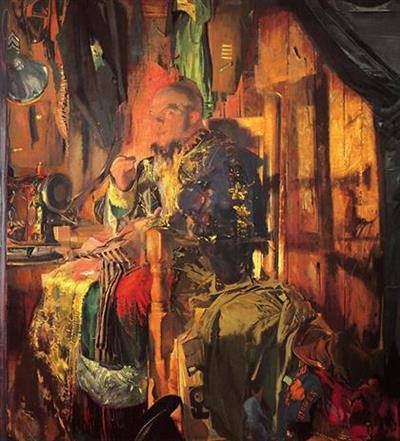
School of Hieronymous Bosch (The Netherlands, c.1450–1516)
Last Judgment, late 15th century.
Oil on canvas.
Lent by Kirk Edward Long.

Jerome Witkin
The Devil as a Tailor, 1978-1979
oil on canvas, 72 x 65 inches
collection of James and Barbara Palmer, State College, Pennsylvania.
Sympathy for the Devil at the Cantor Arts Center To celebrate the arrival of Jackson Pollock’s ‘Lucifer’ the Cantor Arts Center presents ‘Sympathy for the Devil: Satan, Sin, and the Underworld’ an exhibition that explores the fascinating evolution of artists’ depictions of the devil through the past 500 years.]]>
Source: Cantor Arts Center
“Sympathy for the Devil: Satan, Sin, and the Underworld” includes more than 40 works, primarily from the Cantor’s collection. The exhibition opens to the public on August 20 and continues on view through December 1, 2014.
Before the 16th century, artists borrowed features from the Arcadian god Pan and from Celtic, Egyptian and Near Eastern deities. During the Renaissance, artists found inspiration in accounts by Homer, Dante and Virgil. As works on view reveal, by the 16th century the devil is generally depicted as a horned beast, as in the engraving Lucifer by Cornelis Galle. Later, when Lucifer’s revolt against God was reinterpreted as a revolt against tyranny, Lucifer evolved into a dark romantic hero as seen in Jean-Jacques Feuchère’s sculpture ‘Mephistopheles’.
Interestingly, in the 20th century, graphic representation of the devil largely disappears. Hell seemingly becomes an aspect of this world, a notion summarized in Jean-Paul Sartre’s observation, “Hell is the others.” Its denizens are ordinary people who do horrible things, as in Jerome Witkin’s painting ‘The Devil as Tailor’, in which Satan appears as a tailor stitching the attire of those involved in Nazi Germany’s Holocaust.
The exhibition also features Albrecht Dürer’s ‘Harrowing of Hell’; several versions of the ‘Last Judgment’, including a painting from the school of Hieronymous Bosch; allegories by Pieter Brueghel representing the sins that condemn people to torments by the devil and his demons; and images of witches, such as Louis Boulanger’s frenetic ‘Sabbath’, depicting those who choose to serve the Devil. Also included are images of the Greco-Roman underworld that contributed to the Christian concept of Hell as a realm of eternal punishment.
Other artists represented in the show are Hendrick Goltzius, Jacques Callot, Gustav Doré and Max Beckmann. Works are drawn from the Cantor’s permanent collection and on loan from Stanford Library’s Special Collections, Kirk Edward Long and Barbara and James Palmer.
Related content
Getty Museum presents ‘Chivalry in the Middle Ages’ (exhibition, 2014)
Follow us on:


